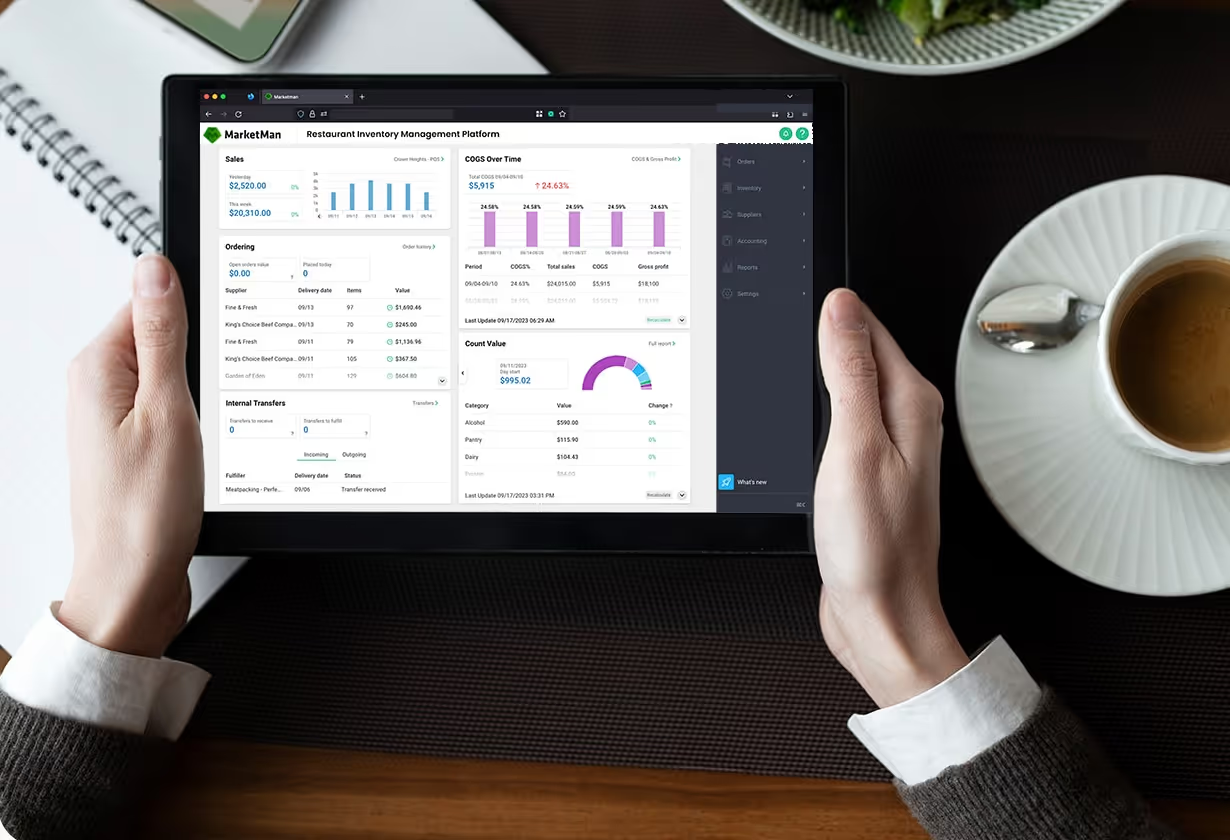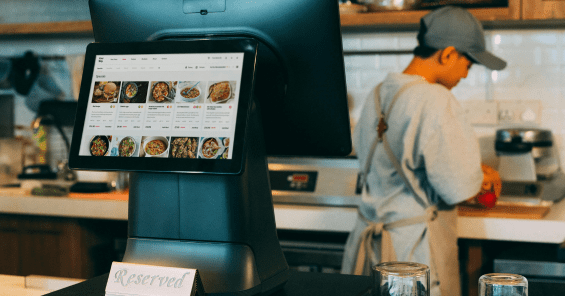

Hiring Restaurant Staff: 5 Tips to Increasing Employee Retention
Discover effective employee retention strategies for restaurants. Learn how to calculate turnover rates, identify key qualities, conduct thorough interviews, invest in training, and leverage data.
Whether you manage a coffee chain or run a full-service establishment, you know that hiring the right staff and keeping them can be a challenging task. Turnover rates in the restaurant industry are high, with the average annual rate being 79.6% over the past decade.
High turnover is costly for restaurants – affecting overall operations, training efforts, consistency, and guest experiences.
So how do you find the right talent for your establishment? How do you sustain the staff you have?
In this article, we’ll explore how to create an effective employee retention strategy, so you can hire effectively, retain the best talent, and grow alongside a stable and efficient team.
What is Restaurant Turnover?
Restaurant turnover rate, or churn rate, measures the number of staff members who leave an establishment within a specific timeframe. This rate can fluctuate based on the industry segment, seasonality, and opportunities for advancement.
Understanding your turnover rate is essential, as it reveals the stability and satisfaction levels of your staff and offers insight into the effectiveness of your employee engagement practices.
By knowing your restaurant's turnover rate, you can make informed decisions to retain staff and maintain optimal staffing levels, ensuring your business runs smoothly and profitably.

How to Calculate Your Restaurant Turnover Rate
To calculate your restaurant turnover rate, determine the following:
- Decide the time period you want to measure, whether that’s monthly, quarterly, or annually.
- Record how many employees were on staff at the beginning of the chosen timeframe.
- Track how many employees left the restaurant during this period.
- Add the number of employees at the beginning and the end of the period, then divide by two to calculate the average number of employees during the period.
The formula for calculating a restaurant’s turnover rate is:
Turnover Rate = (Number of Employees Who Left / Average Number of Employees) × 100
5 Tips to Increase Employee Retention
1. Identify Key Qualities for Your Ideal Staff
Before starting the hiring process, outline the qualities that are important for your restaurant's success. These might include a positive attitude, strong work ethic, ability to work in a team, and a passion for the hospitality industry.
While it’s important to look for skilled candidates, it’s also crucial to find those who share your restaurant's values and culture.
Involve current team members in identifying and prioritizing these traits, as their input can provide valuable insights. Look to successful team members and ask yourself which traits they hold that your team can use more of.
This list of qualities will be useful when crafting job descriptions and conducting candidate interviews.
2. Dedicate Time for Thorough Interviews
A lengthy hiring process can be costly, but rushing through interviews often leads to poor hiring decisions and increased training expenses over time.
Investing the time to conduct thorough interviews allows you to understand each candidate's experience, skills, and personality, ultimately saving you from costly turnover.
Ask specific interview questions that reveal how candidates handle different situations and how their work styles will integrate with your team. This careful approach ensures you select the right people who will contribute positively to your restaurant’s success.
Some interview questions for restaurant managers include:
- Describe a time when you had to handle a difficult customer. How did you manage the situation?
- Can you walk me through your experience with restaurant technology?
- How do you ensure that each customer has a positive experience at the restaurant?
- What is your availability, how flexible are you with shifts, and are you open to working in different roles within the restaurant if needed?
When you’ve identified promising candidates, consider offering trial shifts. This approach ensures you build a team with the right skills and cultural fit, fostering a cohesive and productive work environment.

3. Invest in Training Your Employees
From taking orders to ensuring portion control and handling inventory, staff members juggle a variety of tasks. Employee training is one of the many challenges restaurant managers face but it’s also one of the most important.
Develop a comprehensive training program that includes both initial onboarding and ongoing skill development. Provide an employee handbook that outlines your restaurant's policies, procedures, and expectations.
Regular training sessions, shadowing, and well-structured training programs equip staff with the skills and knowledge they need to succeed, leading to higher job satisfaction and a sense of investment in their professional growth.
Implement restaurant management software with a Digital Cookbook to train kitchen staff with ease. Whether it’s to identify correct ingredients, understand portion sizes, know various preparation procedures, or learn every recipe’s cooking time, a cloud-based cookbook ensures every staff member has the tools they need to provide consistent and profitable plates.
4. Focus on Teamwork and Growth
Without communication or feedback, staff won’t know what they need to improve on and management won’t be aware of operational gaps and opportunities.
Managers who encourage open communication within their team foster an environment of growth and positive morale. When staff feel heard, they feel a part of a cohesive team and are more likely to approach management with concerns, leading to changes that can reduce employee turnover.
Offer opportunities for growth and advancement within the restaurant, such as cross-training in different roles or leadership development programs. Recognizing and rewarding teamwork and individual contributions can boost morale and loyalty.
5. Leverage Data From Your Technology
Restaurant staff often juggle various responsibilities. Leveraging technology can alleviate their workload by eliminating tedious pen-and-paper tasks, allowing them to focus on what matters most: smooth shift operations, excellent customer service, and a great dining experience.
Your restaurant’s tech stack data offers valuable insights to enhance your retention strategy. Utilizing technology enables accurate forecasting of future needs. POS sales data, MarketMan’s Suggestive Ordering feature, and Staff Scheduling software all inform optimal staffing levels.
By avoiding under or over-staffing, you save money and maintain a manageable workload for your staff. This balanced approach reduces stress, boosts job satisfaction, and fosters a positive work environment, ultimately contributing to higher employee retention rates.

MarketMan is a restaurant management platform that takes the guesswork out of running a restaurant and simplifies all back-of-house operations all on one unified platform. Book a demo and learn how MarketMan can help your business today!
Author
Contributors
If you have any questions or need help, feel free to reach out
Don't miss out on maximizing your restaurant's profits! Calculate your ROI with MarketMan
Join over 18,000 restaurants and get the hottest restaurant tips delivered to your inbox
You may also be interested in
Ready to get started?
Talk to a restaurant expert today and learn how MarketMan can help your business







